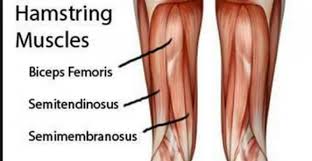Building Muscle: Strength vs Endurance
Table of Contents
Introduction:
Do you ever wonder what differentiates athletes with impressive strength from those with extraordinary endurance? While both forms of muscle performance are valuable, understanding the key distinctions can help you tailor your training regimen to achieve your specific goals.
In this article, we will delve into the fascinating world of muscle development, exploring the contrasts between strength and endurance. By gaining insights into these aspects, you will be equipped to optimize your workout routine and maximize your potential.
Strength: The Powerhouse of Muscular Performance
When we think of strength, images of powerful weightlifters and explosive athletes often come to mind. Strength is defined as the ability of the muscles to exert maximal force against resistance. Let’s explore the factors that influence strength and the best training strategies to enhance it.
Muscle Fiber Composition: The Key to Unleashing Strength
The composition of muscle fibers plays a crucial role in determining an individual’s strength potential. Two primary types of muscle fibers exist:
- Type I (Slow Twitch) Fibers: These fibers are designed for endurance activities and are characterized by their resistance to fatigue. They are rich in mitochondria, which provide energy for sustained contractions. However, they exhibit limited force production.
- Type II (Fast Twitch) Fibers: These fibers are responsible for generating rapid and forceful contractions. While Type II fibers can be further classified into Type IIa and Type IIb, the latter is particularly significant for strength. Type IIb fibers possess a higher potential for hypertrophy and force production.
Strength Training: The Pathway to Unrivaled Power
To build strength effectively, specific training methods must be employed. Here are some key considerations:
- Heavy Resistance Training: To stimulate Type II muscle fibers, exercises with heavy loads and low repetitions are essential. Compound movements like squats, deadlifts, and bench presses engage multiple muscle groups simultaneously, promoting overall strength development.
- Progressive Overload: Gradually increasing the intensity and load of your workouts is vital to ignite muscular adaptations. It challenges your muscles to continually adapt to new demands, resulting in increased strength over time.
- Rest and Recovery: Adequate rest is crucial to ensure optimal recovery and muscle growth. Intense strength training sessions cause microscopic damage to muscle fibers, and rest allows for repair and growth.
- Proper Nutrition: Consuming a balanced diet that includes sufficient protein is vital for muscle repair and growth. Aim for a protein intake of around 1.6-2.2 grams per kilogram of body weight to support strength gains.
Endurance: The Stamina of Muscular Performance
While strength focuses on raw power, endurance deals with the ability to sustain prolonged muscle activity. Whether you’re an endurance athlete or simply looking to improve your overall stamina, understanding how to train for endurance is key.
Oxygen Delivery: The Fuel for Endurance
One of the main factors underlying endurance is the efficient delivery of oxygen to the working muscles. This delivery is facilitated by various mechanisms, including:
- Aerobic Capacity: Improving your aerobic capacity increases your body’s ability to utilize oxygen and produce energy. Activities such as running, swimming, and cycling promote cardiovascular fitness and improve endurance.
- Mitochondrial Density: Mitochondria, the powerhouse of cells, are responsible for energy production. Endurance training stimulates the growth and density of mitochondria in muscle fibers, enhancing their ability to generate energy aerobically.
Endurance Training: The Path to Unyielding Stamina
Want to enhance your endurance capacity? Follow these training strategies:
- Long-Distance Training: Engage in prolonged, low-intensity exercises that challenge your cardiovascular system and muscular endurance. This can include jogging, cycling, or swimming for extended periods at a moderate pace.
- Interval Training: Alternating high-intensity bursts with recovery periods improves both aerobic and anaerobic endurance. This method, known as interval training, promotes various physiological adaptations that enhance endurance performance.
- Cross-Training: Incorporate different aerobic activities into your routine to challenge your muscles in diverse ways. This approach prevents overuse injuries and provides a more comprehensive approach to endurance development.
Callout: “Endurance training requires dedication and consistency. By progressively challenging your aerobic capacity and engaging in diversified workouts, you can surpass your limits and achieve extraordinary stamina.”
Conclusion:
Understanding the differences between strength and endurance empowers you to tailor your training regimen to meet your specific goals. While strength training focuses on heavy resistance and Type II muscle fiber activation, endurance training prioritizes aerobic capacity and oxygen delivery.
By incorporating targeted strategies, such as progressive overload for strength or interval training for endurance, you can unlock your true potential. Remember, consistency, proper nutrition, and sufficient recovery are crucial for both strength and endurance development. So, whether you aspire to new heights of strength or unwavering stamina, embrace the power of training specificity and unleash your full muscular potential!
Now, armed with this knowledge, are you ready to embark on your personal fitness journey? Let us know in the comments below!
Please note that the information provided in this article is for educational purposes only and does not substitute medical advice.







